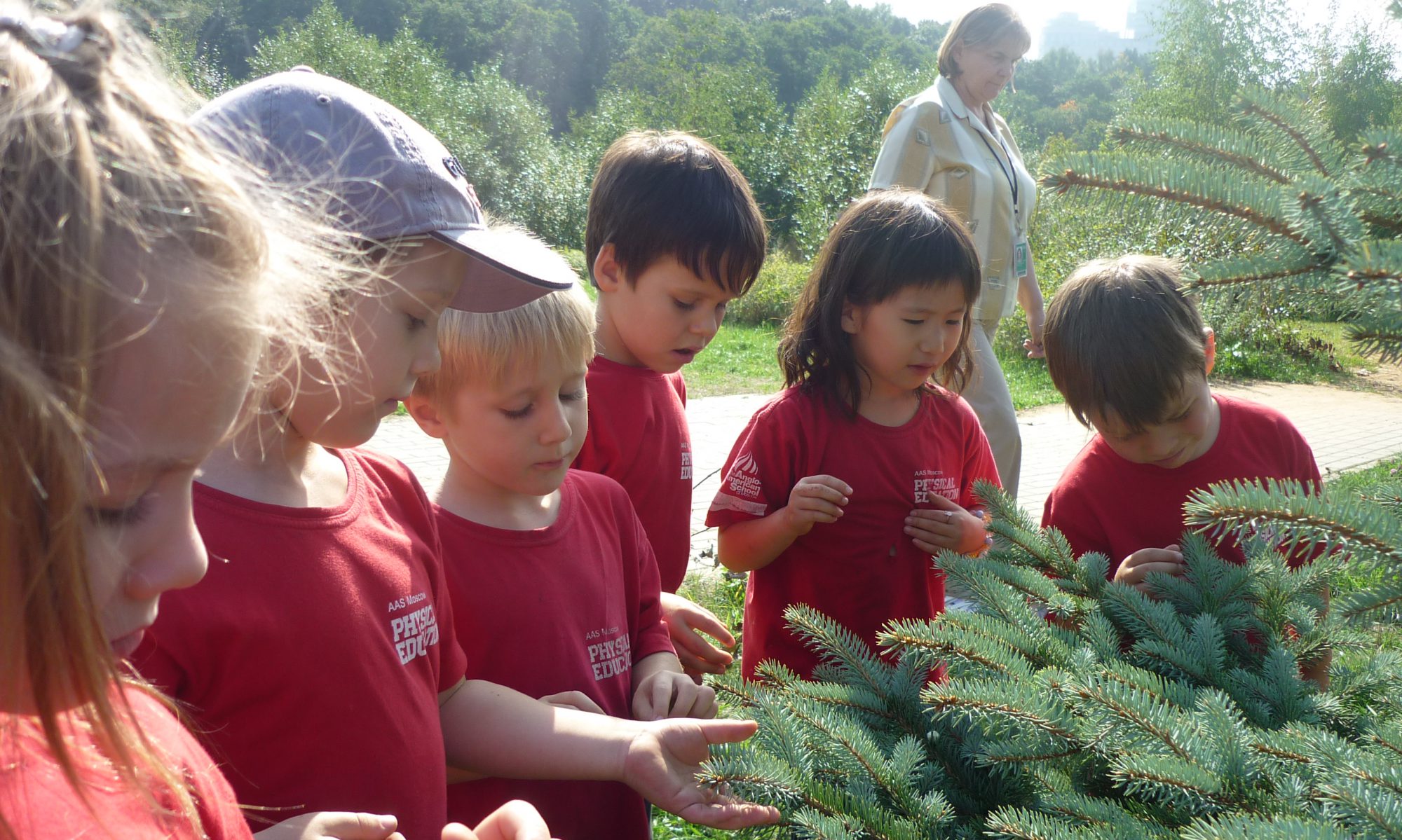During our year-long “How the World Works” unit, KZE students observed changes over time.
They noticed that:
Lizzy: “I noticed the changes happened to ourselves.”
Lisa: “some changes happened with non-living things. Some changes happened with living things.”
Liam:” Changes happened in the nature.”
Scarlett:” Changes happened in different seasons. Most of the changes I wrote down were inside the classroom.”
Kyle:” Changes happened all around us.”
Daisy: “The forest changed at different time of the year. We changed from Pre-k to K”
Michael:” I noticed time changed, and the months changed.”
Emerson: “Changes even happened inside us.”
Trace: “I noticed that all the changes are different.”
Fatima”I was small, now I am bigger. We have grown.”
Safiya: “I noticed that our caterpillars have changed.”
Hannes: “I noticed that the calendar changed.”
Freddie: “I noticed that the months in the calendar changed.”
[KGVID width=”360″ height=”480″]http://blogs.aas.ru/kze/wp-content/uploads/sites/28/2015/06/low-556edf14acc58303000004b2.mov[/KGVID]
[KGVID width=”360″ height=”480″]http://blogs.aas.ru/kze/wp-content/uploads/sites/28/2015/06/low-556ed4839c3478030000091f.mov[/KGVID]
[KGVID width=”360″ height=”480″]http://blogs.aas.ru/kze/wp-content/uploads/sites/28/2015/06/low-556ed4589c3478030000091b.mov[/KGVID]
[KGVID width=”360″ height=”480″]http://blogs.aas.ru/kze/wp-content/uploads/sites/28/2015/06/low-556ed479acc583030000049a.mov[/KGVID]
[KGVID width=”360″ height=”480″]http://blogs.aas.ru/kze/wp-content/uploads/sites/28/2015/06/low-556ed449acc5830300000498.mov[/KGVID]
[KGVID width=”360″ height=”480″]http://blogs.aas.ru/kze/wp-content/uploads/sites/28/2015/06/low-556ed435acc5830300000494.mov[/KGVID]
[KGVID width=”360″ height=”480″]http://blogs.aas.ru/kze/wp-content/uploads/sites/28/2015/06/low-556ed387d0ee1303000009c1.mov[/KGVID]
[KGVID width=”360″ height=”480″]http://blogs.aas.ru/kze/wp-content/uploads/sites/28/2015/06/low-556ed359d0ee1303000009bf.mov[/KGVID]
[KGVID width=”360″ height=”480″]http://blogs.aas.ru/kze/wp-content/uploads/sites/28/2015/06/low-556ed48b2a07b2030000000d.mov[/KGVID]
[KGVID width=”360″ height=”480″]http://blogs.aas.ru/kze/wp-content/uploads/sites/28/2015/06/low-556ed46d9c3478030000091d.mov[/KGVID]
[KGVID width=”360″ height=”480″]http://blogs.aas.ru/kze/wp-content/uploads/sites/28/2015/06/low-556ed43fd0ee1303000009c6.mov[/KGVID]
[KGVID width=”360″ height=”480″]http://blogs.aas.ru/kze/wp-content/uploads/sites/28/2015/06/low-556ed42c2a07b20300000005.mov[/KGVID]
[KGVID width=”360″ height=”480”]http://blogs.aas.ru/kze/wp-content/uploads/sites/28/2015/06/low-556ed41eae75150300000003.mov[/KGVID]
Students noticed that some changes happened once or twice, and some changes happened again and again and in a pattern (cycle). They enjoyed recording and explaining one of the earth cycles – seasons.
Students made connections between earth’s changes and patterns of behaviors in living things related to these changes. They created a poster to show their understanding. They first sorted the changes into groups – ourselves, nature, environment, and time,etc. Then they brainstormed on what living things do when nature/environment or time changes.
Daisy: “In December, there was snow and it was cold. Birds fly to warm places. In May, we have no snow and it is warm. The birds come back.”
Emerson: “First, my green bean was a seed, now it is a plant. It will grow until it is green bean for me to eat.”
Fatima: “The caterpillar have grown into butterfly. The other animals may eat the butterfly.”
Freddie: “Some animals hide when there is snow. When the snow is gone, the animals come out.”
Hannes: “The plants grow. The bees come to the flowers and eat pollen.”
Kyle: “In December, it was cold. Bears go to sleep. Now it is hot, the snow has melted. The bears come out and eat other animals.”
Lisa: “When it was December, it was cold. Animals hide and hibernate. When it is May, it is warm. Birds come back and animals come back too.”
Liam: ” In spring, the grass and flowers grow. The flowers are food for bees and bugs. They eat the flowers so that they can grow.”
Lizzy: ” The caterpillar can make a cocoon and turn into a butterfly. Then other animals eat the butterfly for breakfast, or lunch, or dinner.”
Michael: “It is cold in December. People have to wear warm coats. Now it is warm and we don’t need coats.”
Safiya: “Now the leaves come out. The birds come back to make nests.”
Scarlett: “There were lots of snow before. Some animals hibernated because it was cold. Now there is no snow. Animals come out because it is hot.”
Trace: “In the winter, the trees are dead and now they are not. Some living things hibernate in the winter and other living things don’t because they like the winter.”
As we wrapped up this unit, KZE students demonstrated a better understanding of how the natural environment and humans interact.
